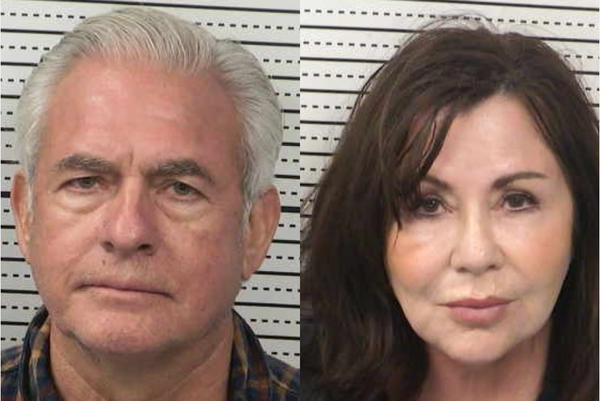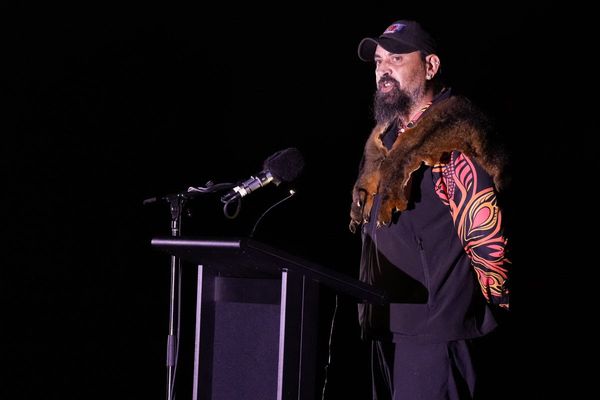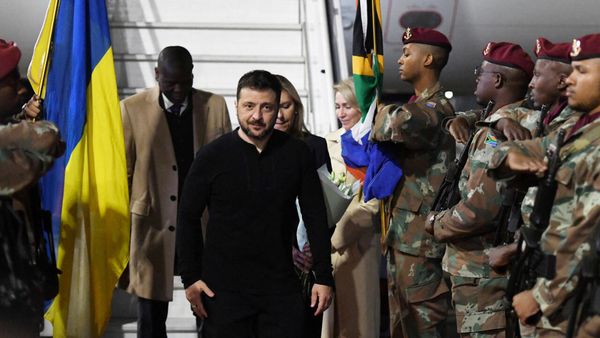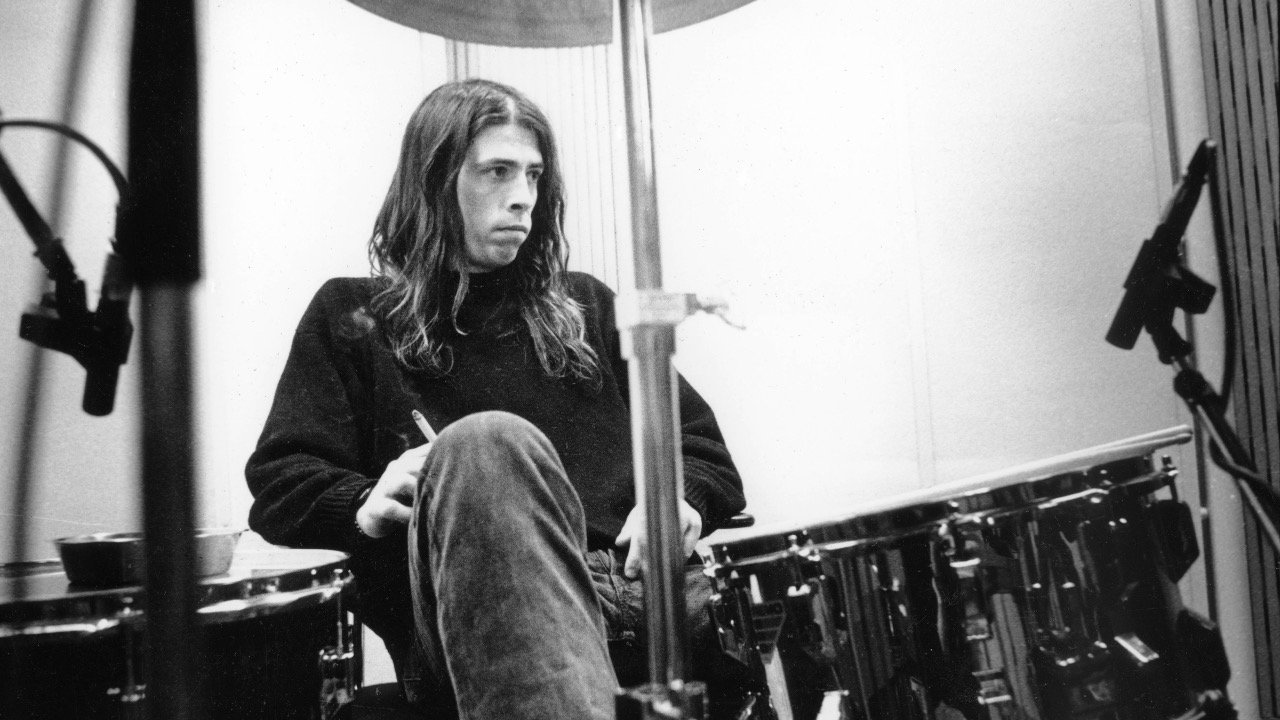
In 1991, Nirvana released the album that would propel them from burgeoning club-level favourites to The Biggest Band in The World. Nevermind, Nirvana’s major label debut, would apply a sleeper hold to glam/hair metal, knock Michael Jackson’s Bad off the Billboard top spot and kickstart the ‘grunge’ movement that shaped youth culture in every form. The catalyst for the album’s success? Smells Like Teen Spirit.
Released on 10 Sept 1991, it was a slow burn, failing to chart — no surprises there, given that Nirvana were still relative unknowns struggling to pay their rent. But to discover the origins of Dave Grohl’s iconic drum parts, we need to rewind 18 months, before Grohl was even a member of the band.
During early April 1990, Nirvana — Kurt Cobain, Krist Novoselic and Chad Channing — drove from Olympia, Washington to Madison, Wisconsin to complete a five-day recording session with Butch Vig, then known for his work with Killdozer.
The sessions were scheduled to begin work on Nirvana’s Sub Pop follow-up to Bleach, with nine songs recorded (Breed, Dive, In Bloom, Stay Away, Sappy, Lithium, Here She Comes Now and Polly), before the band headed home with the intention of returning to finish the album’s session.
In the months that followed, however, came big changes. Drummer Chad Channing was out, and Dave Grohl — whose band Scream had broken up — found himself stranded in LA and gig-less when he got word from Melvins frontman, Buzz Osborne that Nirvana were looking for a drummer.
Osborne had previously taken Cobain and Novoselic to watch Scream featuring a young Dave Grohl on drums, hair flailing, battering his kit as if his life depended on it, impressing Cobain and Novoselic.
Buzz connected Grohl with the band — who were about to poach Mudhoney’s Dan Peters — and Grohl flew to Seattle to meet his potential new bandmates. “I remember getting off the plane, and Krist and Kurt meeting me at baggage claim. It was like having the Children of the Corn meeting you at the airport.” Grohl said in a 2018 interview with VisitSeattle.
Meanwhile, Nirvana’s popularity continued to grow, and the prospect of releasing another album with Sub Pop grew less appealing. Instead, Cobain and the band began shopping the ‘Smart Sessions’ tape to major labels, eventually landing with Geffen.
With Vig back on board, planning for recording the album reconvened, with Nirvana continuing to write and rehearse songs in a rented barn/outbuilding in Tacoma, Washington, recording their ideas and progress on a boom box.
Vig recalls receiving a tape from the band with an audio message from Cobain, “Hey Butch, it’s Kurt!” it began, “We’ve got a new drummer, his name is Dave, he’s the best drummer in the world!.”
At that, the recording launches into Smells Like Teen Spirit. “I could hear the riff, but as soon as the drums came in, it just distorted like crazy.” Despite the poor recording — overloading the rudimentary cassette recorder’s built-in mics — Vig knew they were onto something.
This was confirmed when Vig visited Nirvana at their rehearsal room, becoming one of the first people to ever hear the song played live, in the flesh. “They played …Teen Spirit, and it just crushed me how good [Grohl] was, and how good they sounded.” Vig told Howard Stern in 2022.
“I started pacing around the room - usually I take notes but i was just taking it all in. They finished the song and Kurt was like, ‘What do you think, Butch?’. I went ‘Play it again.’”
By the time the band arrived at LA’s Sound City Studios, Nirvana was a tight, well-oiled, and well-rehearsed machine. Sound City had been chosen in part for its low rates. During an era where studios were rapidly swapping analogue tape machines for the glitzy new digital platform of Pro Tools, Sound City held firm. As well as this, the studio had two more jewels in its crown that appealed to Vig.
First was the live room, previously used to capture the likes of Tom Petty, Fleetwood Mac and Cobain favourite, Neil Young. The former Vox warehouse had a sprinkling of studio magic which lent itself to capturing a great drum room sound - magic which is now available to us as a plugin courtesy of Universal Audio's Sound City software.
Second, was the Neve 8028 console housed within the studio. The desk was one of only four made, loaded with classic Neve mic preamps and 1084 EQ modules. It would later go on to be purchased by Grohl and immortalised, along with Sound City Studios in Grohl’s 2015 documentary of the same name.
“That room at Sound City, it’s like a small gymnasium and it’s almost bulletproof." Vig told us in 2020. "But when you put up those room mics and hear the sound of that room, that’s part of what made that studio sound so good.
“It just had a really awesome tone to it. It was live, but not too splashy, the decay time on the high end of the midrange is very even. It’s the perfect room for drums, really. It also helped that Dave Grohl, one of the most kick-ass drummers in rock and roll was behind the kit!”
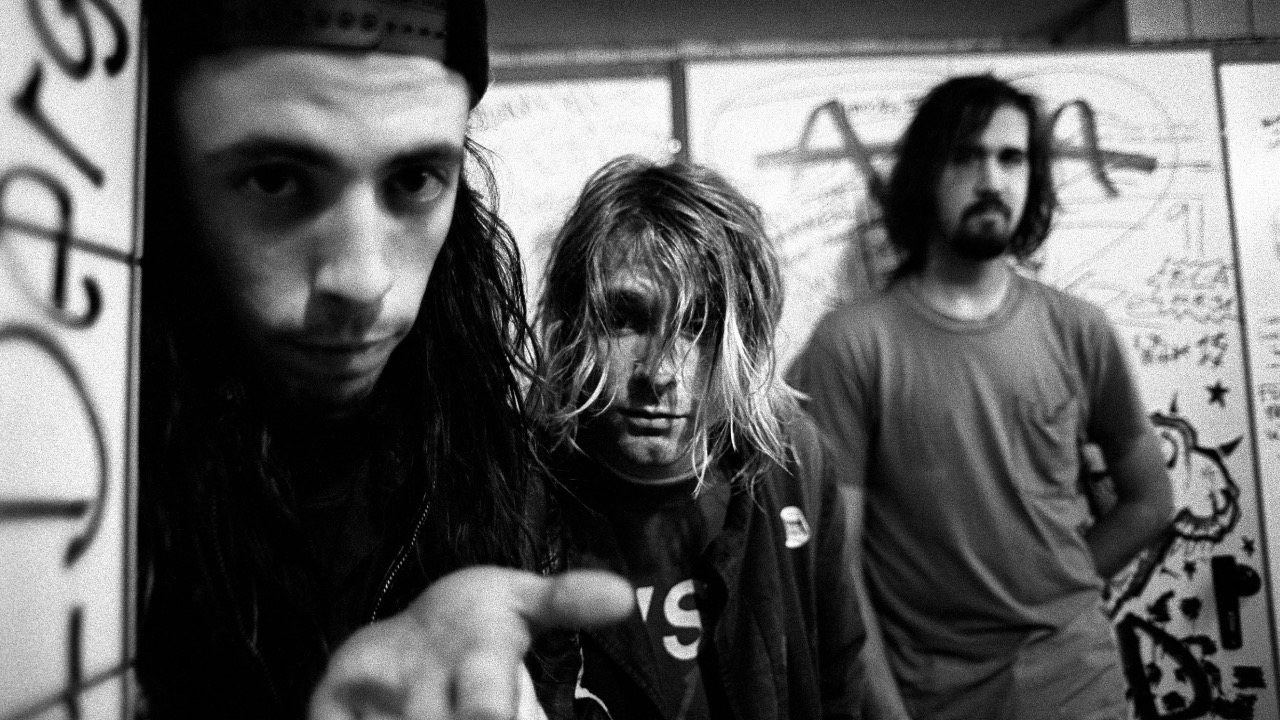
For the sessions, Grohl used a Tama Granstar (not Artstar II, as commonly reported), along with some additional gear, which was rented from Ross Garfield’s Drum Doctors company. Included in the hire list was a Ludwig Black Beauty snare, as well as a now-revered Tama Mastercraft Bell Brass snare.
Reissued in 2024, the Tama snare has gone on to become and ‘modern classic’, thanks to its supremely loud, aggressive attack and punchy, full-bodied response employed by the likes of Nirvana, Metallica, Rage Against The Machine and many more.
“It was a pretty simple setup.” Butch Vig told MusicRadar in 2020 of the mics he used to record Grohl’s kit. “I told the engineer that I wanted to default to mics I knew and was used to, so I used an AKG D12 on the kick, I think I used an SM57 on the snare and possibly an AKG 451 underneath.
“We used Sennheiser 421s on the toms, again because I was used to those Sennheiser mics. AKG 414s as the overheads, I had them at Smart and they’re great all-round condensers. I think the secret to that sound, is we had a couple of Neumann U87s [used as room mics] that were probably 15-18 feet back from the kit.”
When it came to mixing Nevermind, veteran mix engineer, Andy Wallace got the call. It’s here where some confusion over the resulting drum sound emerges. The album was recorded and mixed on analogue gear, but that didn’t remove the possibility of bolstering the drum sound with samples.
This now commonplace technique involves blending in additional sounds and elements that are deemed to be lacking from a recording in order to add cut and weight. It’s often misunderstood for editing and straightening out timing fluctuations (there’s no suggestion that Grohl’s drums required ‘fixing’ from a performance standpoint).
The use of samples is something of a staple of Andy Wallace’s mixes, as demonstrated by Rick Beato’s analysis in the video below. While Wallace has never explicitly confirmed whether or not he did or did not use samples to reinforce the sound of Grohl’s kit, he has conceded that there’s a possibility that samples were used to enhance the drum track’s ambient mics, ironic given that Sound City was chosen in-part for its fantastic drum room sound.
Whether he did or didn’t, the benefit of time has gifted us the opportunity to hear Butch Vig’s original mixes as initially submitted to the Geffen. These were included with the 20th Anniversary edition of Nevermind, and are labelled ‘Devonshire Mix’ and allow for interesting comparison.
Sonics aside, though, a huge part of Smells Like Teen Spirit’s hook comes from Grohl’s drum parts. Interestingly, it’s the first — and only song on Nevermind — where the songwriting credits are assigned to all three members of the band rather than Cobain.
Nirvana’s love for The Pixies, complete with the loud-quiet dynamic template informs a huge part of the band’s songwriting approach, something that Cobain wasn’t shy to admit, telling Rolling Stone in 1994, “I connected with that band so heavily that I should have been in that band — or at least a Pixies cover band. We used their sense of dynamics, being soft and quiet and then loud and hard.”
Grohl also maintains that at the core of Nirvana’s songwriting, sat a backbone of simplicity, on more than one occasion likening them to nursery rhymes . “I didn’t throw a bunch of drum fills in there. I tried to keep it as simple as possible.” Grohl says on the Classic Albums: Nevermind documentary. “That was kind of an unspoken rule. We almost wanted them to be like children’s songs.”
This approach is outlined from the get-go, with Grohl’s distinctive flams on the snare seemingly ushering in a simple four-count to casual listeners. But dig a little deeper and you’ll realise that he’s actually playing groups of even 16th-notes between the flams on the snare, bass drum and hi-hats.
Complex? Not really, but play it the layman’s way and it’s clear that the often-overlooked nuances of Grohl’s heavy-hitting, ‘neanderthal’ style require a little attention to discover.
But, as well as the influence of '90s indie-apathy, Grohl sought inspiration from some very different drummers when it comes to some of Smells Like Teen Spirit’s standout drum moments.
“If you listen to Nevermind, I pulled so much stuff from The Gap Band and Cameo, and Tony Thompson, on every one of those songs” Grohl tells Pharrell Williams in his Cradle to Stage series. “The big disco flam… I told Tony Thompson that. He came to my house for a barbecue. I was like, 'Man, I just want to thank you because I owe you so much, I've been ripping you off my whole life.' And he goes, 'I know.'"
There’s a James Brown-level of reliance on a foot-heavy first beat of every bar — accented with dual cymbal crashes — during the syncopated intro and chorus beat, with Grohl laying back beforehand, adding weight, anticipation and above all, groove to each cycle.
It’s a trick also used extensively by Liam Howlett of UK dance-rock titans, The Prodigy when programming and sampling drum parts, and could serve as just part of the reason why Grohl and The Prodigy have shown mutual respect for each others’ work in the past. Check out the drums on the band’s 1996 hit, Firestarter, and you’ll notice some similar traits, not least the Grohl-style quarter-note snare hits that are also present on the outro of Smells Like Teen Spirit.
The verses of Smells Like Teen Spirit demonstrate the Pixies influences, with Grohl removing the busyness of the beat, reverting to ‘2 & 4’ on the snare while the bass drum offers a simple ‘We Will Rock You’ 8th-note pattern, outlining Novoselic’s bassline to create a solid, straighter groove. Crucially, the hi-hats are closed spare a lift on ‘4&’ every fourth time round, adding to the loud/soft contrast.
Moving to the pre-chorus, and the pattern remains the same as the verse for the first half, with the hi-hats lifted open. For the second part, Grohl adds an additional 8th-note on the bass drum, pushing the song towards the chorus before he launches into the iconic machine-gun 16th notes on the snare, punctuated by another big flam.
But underneath one of Grohl’s career standout fills sits another reminder of his sometimes-subtle nuances. Grohl, a huge Beatles fan, employs Ringo-style continuity of the bass drum underneath his hands, keeping an 8th-note pulse underneath the roll.
This serves to keep the momentum of the song driving forward, and while Nirvana were never really a band whose music was intended for dancing, it highlights Grohl’s aptitude for arrangement in order to keep the pace and feel heading towards a crescendo.
So, would Smells Like Teen Spirit have been a success if, say, Chad Channing or Dan Peters had tracked the drums? It’s impossible to know, but obviously Cobain’s riff, melodies and the accompanying video all had their part to play too.
There’s no doubt that Grohl’s part (one of the few on the album that wasn’t cribbed from Chad Channing’s original demo tracks) contains more than a couple of important hooks.
Frankly, with a song where every element combines to create a near-perfect rock song, we’re not sure there’s any use in speculating.
